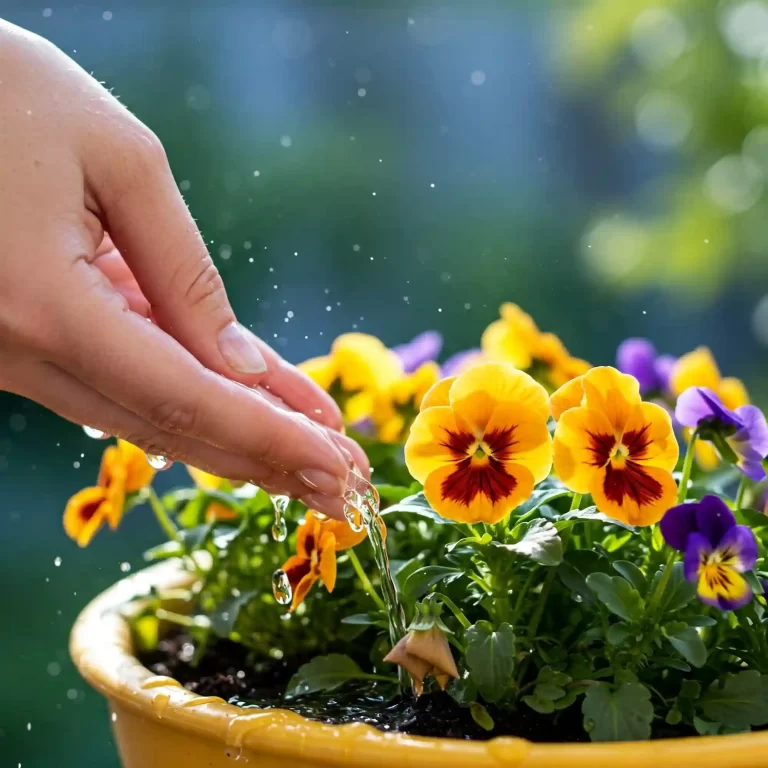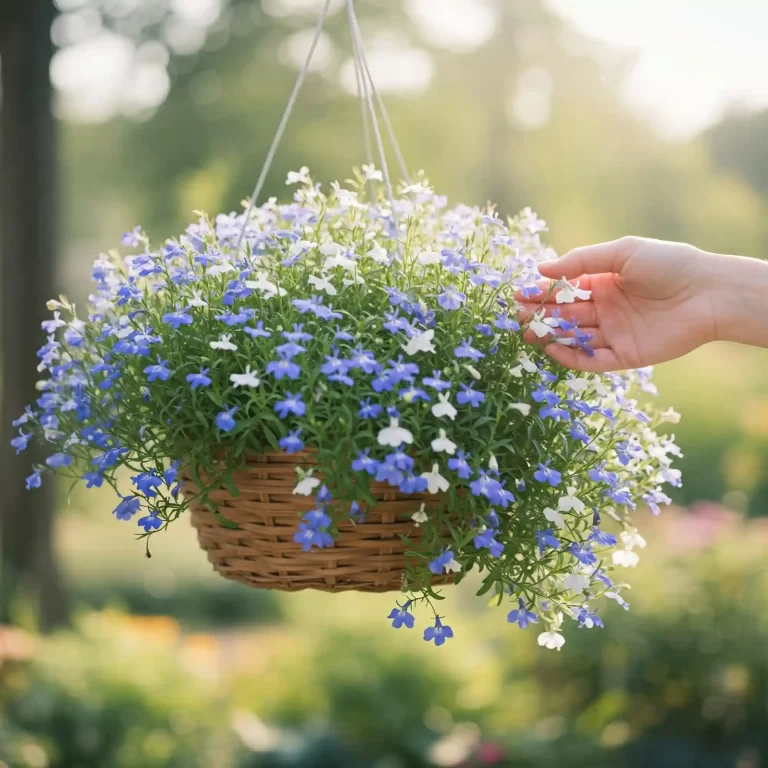Are you captivated by the enchanting beauty of pink clove flowers? Do you yearn to transform your garden into a fragrant oasis? Growing pink clove flowers is a rewarding endeavor that can bring joy and elegance to your outdoor space. However, cultivating these delicate blooms requires careful attention and knowledge. This comprehensive guide will walk you through the essential steps to nurture healthy and thriving pink clove flowers.
Choosing the Right Location for Your Pink Clove Flowers
The foundation for successful pink clove flower cultivation lies in selecting the optimal growing environment. These exquisite blooms thrive in specific conditions, and understanding their preferences is crucial.
Pink clove flowers are sun-loving plants, necessitating at least six hours of direct sunlight daily. A location that receives ample morning sun is ideal, as it allows the plants to dry quickly, reducing the risk of fungal diseases. While they can tolerate some shade, prolonged periods of shade can hinder growth and flower production.
Soil composition plays a vital role in the health and vigor of your pink clove flowers. These plants prefer well-drained soil rich in organic matter. The soil pH should ideally be slightly acidic to neutral, ranging from 6.0 to 7.0. Heavy clay soil can retain excessive moisture, leading to root rot, so amending it with compost or sand is essential to improve drainage.
Protecting your pink clove flowers from harsh weather conditions is crucial for their well-being. Strong winds can damage delicate stems and flowers, so consider planting them in a sheltered location or providing windbreaks. Similarly, extreme temperatures can stress the plants. Ensure your chosen spot offers protection from frost and scorching heat.
If you have limited outdoor space, container gardening is a viable option for growing pink clove flowers. Select a container with adequate drainage holes to prevent waterlogging. Fill the container with a high-quality potting mix that retains moisture while allowing excess water to drain freely.
Choose a container that is at least 12 inches in diameter to provide ample space for root development. Ensure the container has drainage holes to prevent waterlogging. Fill the container with a high-quality potting mix that is well-draining and rich in organic matter. Consider adding a slow-release fertilizer to the potting mix to provide essential nutrients for the growing season.
Preparing the Soil
Creating a suitable soil environment is fundamental for cultivating healthy pink clove flowers. These plants thrive in well-drained soil rich in organic matter. To ensure optimal growth, consider the following steps:
Soil pH: Pink clove flowers prefer slightly acidic to neutral soil with a pH range of 6.0 to 7.0. You can test your soil’s pH using a soil testing kit available at most garden centers. If your soil is too acidic, adding lime can help raise the pH. Conversely, if the soil is too alkaline, incorporating organic matter like compost or peat moss can lower the pH.
Improving Drainage: Pink clove flowers detest soggy soil. If your soil tends to retain water, incorporating organic matter such as compost, peat moss, or well-rotted manure can enhance drainage. Additionally, creating raised beds can improve soil drainage and prevent waterlogging.
Adding Organic Matter: Enriching your soil with organic matter provides essential nutrients and improves soil structure. Incorporate compost or well-rotted manure into the soil before planting. This organic matter helps retain moisture, promotes healthy root growth, and supports beneficial soil microorganisms.
By carefully preparing the soil, you create a hospitable environment for your pink clove flowers to thrive and produce abundant blooms.
Planting Your Pink Clove Flowers
The timing of planting your pink clove flowers depends on your local climate. In regions with mild winters, planting in the fall allows the plants to establish roots before spring growth. However, spring planting is suitable for most areas.
Seed Starting: If starting from seeds, sow them indoors about six to eight weeks before the last frost. Use seed starting trays filled with a well-draining seed starting mix. Cover the seeds lightly with soil as they require light to germinate. Keep the soil moist but not soggy. Once seedlings have developed a few true leaves, transplant them into individual pots.
Transplanting Seedlings: When the threat of frost has passed, transplant your pink clove seedlings into the prepared garden bed or containers. Space the plants according to the variety and desired growth habit. Gently handle the seedlings to avoid damaging the roots. Water thoroughly after planting.
Planting Established Plants: When purchasing established pink clove plants, choose healthy-looking specimens with vibrant foliage. Dig planting holes twice the size of the root ball. Carefully remove the plants from their containers and loosen the roots. Place the plants in the planting holes, ensuring the crown is at the same level as the surrounding soil. Fill in the holes with soil, gently firming it around the roots. Water thoroughly.
Provide adequate support for young pink clove plants, especially tall varieties, to prevent them from toppling over. Use stakes or plant supports to secure the plants in place.
By following these steps and considering your local climate, you can successfully plant your pink clove flowers and set the stage for their growth and development.
Watering Your Pink Clove Flowers
Proper watering is essential for the health and vitality of your pink clove flowers. These plants require consistent moisture, but overwatering can lead to root rot.
Watering Frequency: The frequency of watering depends on several factors, including soil type, weather conditions, and plant size. As a general guideline, water your pink clove flowers deeply and infrequently, allowing the soil to dry slightly between waterings. Avoid shallow watering, as it encourages shallow root growth.
Signs of Overwatering and Underwatering: Overwatering manifests as yellowing leaves, wilting, and stunted growth. Underwatered pink clove flowers exhibit drooping leaves, dry soil, and reduced flower production. Monitor the soil moisture level regularly and adjust your watering accordingly.
Mulching: Applying a layer of mulch around the base of your pink clove plants helps conserve soil moisture, suppress weeds, and regulate soil temperature. Organic mulches, such as compost or wood chips, are ideal. Avoid piling mulch against the stems, as this can promote rot.
Watering During Different Growth Stages: During the growing season, increase the frequency of watering to keep the soil consistently moist. Reduce watering as the weather cools down in autumn to prevent excessive moisture buildup.
By following these watering guidelines, you can maintain optimal soil moisture levels and support the healthy growth of your pink clove flowers.
Fertilizing Your Pink Clove Flowers
Providing adequate nutrients is crucial for the robust growth and abundant flowering of pink clove flowers. Fertilizing your plants regularly supplies the essential elements for healthy development.
Nutrient Requirements: Pink clove flowers require a balanced supply of macronutrients, including nitrogen, phosphorus, and potassium, as well as micronutrients like iron, magnesium, and zinc. These nutrients support overall plant health, foliage growth, and flower production.
Best Fertilizers: A slow-release granular fertilizer formulated for flowering plants is an excellent choice for pink clove flowers. These fertilizers provide a steady supply of nutrients over an extended period. Alternatively, you can use a liquid fertilizer diluted according to the manufacturer’s instructions.
Fertilization Schedule: Fertilize your pink clove flowers every four to six weeks during the growing season. Avoid fertilizing heavily in late summer or fall, as excessive nitrogen can promote lush foliage at the expense of flower production.
Avoiding Over-Fertilization: While proper fertilization is essential, over-fertilization can harm your pink clove flowers. Excessive nutrients can lead to salt buildup in the soil, causing root damage and nutrient imbalances. Follow the recommended fertilizer rates and avoid applying more than the specified amount.
By following a consistent fertilization program, you can ensure that your pink clove flowers receive the necessary nutrients for optimal growth and blooming.
Pruning Your Pink Clove Flowers
Pruning is an essential practice for maintaining the shape, size, and vigor of your pink clove flowers. Regular pruning encourages bushier growth, promotes flowering, and removes dead or diseased plant material.
Benefits of Pruning: Pruning helps to control the size and shape of your pink clove plants. By removing overcrowded branches, you improve air circulation and light penetration, reducing the risk of diseases. Pruning also stimulates new growth and encourages more abundant flowering.
Pruning Techniques: To prune your pink clove flowers, use clean, sharp pruning shears. Make clean cuts just above a leaf node or bud. For shaping, remove crossing or weak branches. To promote bushier growth, pinch back the tips of young shoots.
Removing Dead or Diseased Parts: Regularly inspect your pink clove plants for dead, damaged, or diseased foliage or stems. Remove these parts promptly to prevent the spread of diseases and maintain the plant’s overall health.
Timing of Pruning: The best time to prune pink clove flowers depends on the variety and your desired outcome. Light pruning can be performed throughout the growing season to maintain shape. Heavier pruning is typically done in late winter or early spring before new growth begins.
By incorporating pruning into your pink clove care routine, you can enhance the appearance and health of your plants.
Protecting Your Pink Clove Flowers from Pests and Diseases
Pink clove flowers are susceptible to various pests and diseases that can damage their growth and appearance. Implementing preventive measures and taking prompt action when problems arise are essential for maintaining healthy plants.
Common Pests: Common pests that affect pink clove flowers include aphids, spider mites, and slugs. Aphids are small, soft-bodied insects that suck sap from plants, causing stunted growth and distorted leaves. Spider mites are tiny arachnids that create webbing on plants and cause yellowing and browning of leaves. Slugs are mollusks that feed on leaves and flowers, leaving behind slimy trails.
Effective Pest Control Methods: Several methods can help control pests on pink clove flowers. Strong water sprays can dislodge aphids. Insecticidal soap or neem oil can be used to treat infestations. Introducing beneficial insects like ladybugs or lacewings can help control aphid populations. Spider mites can be managed by increasing humidity around the plants or using insecticidal soap. Handpicking slugs or setting traps can help reduce their numbers.
Preventing and Treating Common Diseases: Common diseases affecting pink clove flowers include powdery mildew, rust, and botrytis. These diseases thrive in humid conditions and can cause leaf spots, powdery growth, and stem rot. To prevent diseases, ensure good air circulation around plants, avoid overhead watering, and remove infected plant material promptly. Fungicides can be used to treat severe infections.
By implementing preventive measures and addressing pest and disease issues promptly, you can protect your pink clove flowers and enjoy their beauty throughout the growing season.
Remember to rotate your crops to prevent the buildup of pests and diseases in the soil.
Propagating Your Pink Clove Flowers
Propagating pink clove flowers allows you to expand your garden or share these beautiful plants with others. Several methods can be used to propagate pink clove flowers, including seeds, cuttings, and division.
Seeds: While possible, propagating pink clove flowers from seeds can be time-consuming and less predictable than other methods. Collect ripe seeds from your plants and sow them indoors in seed starting trays filled with well-draining seed starting mix. Cover the seeds lightly with soil and maintain consistent moisture. Once seedlings have developed a few true leaves, transplant them into individual pots.
Cuttings: Taking cuttings is a common and effective method for propagating pink clove flowers. Select healthy, non-flowering shoots with several nodes. Cuttings should be about 4-6 inches long. Remove the lower leaves and dip the cut end in rooting hormone. Plant the cuttings in a pot filled with a moist potting mix. Cover the pot with a plastic bag to create a humid environment. Place the pot in a warm, bright location. Once the cuttings have rooted, transplant them into individual pots or the garden.
Division: Established pink clove plants can be divided to create new plants. Carefully dig up the plant and divide the root ball into sections, ensuring each section has healthy roots and shoots. Replant the divisions in prepared planting holes. Water thoroughly after dividing.
By mastering these propagation techniques, you can enjoy the beauty of pink clove flowers for years to come.
Experiment with different propagation methods to find the one that works best for you.
Harvesting Pink Clove Flowers
Harvesting pink clove flowers at the right time ensures you enjoy their beauty at its peak. Proper harvesting techniques help prolong the life of your cut flowers.
When to Harvest: Pink clove flowers are typically harvested in the morning when the blooms are fully open and the air is cool. This helps to preserve the flowers’ freshness.
Harvesting Techniques: Use sharp pruning shears to cut the flower stems at an angle. Cut the stems below a leaf node to encourage new growth. Remove any foliage below the waterline to prevent bacterial growth.
Handling and Storing: Place the harvested pink clove flowers in a bucket of lukewarm water containing flower food. Keep the flowers in a cool, shaded location. Store the flowers in a vase filled with clean water and flower food. Replace the water every few days.
By following these harvesting and handling guidelines, you can enjoy the beauty of your pink clove flowers indoors and extend their vase life.
Consider creating floral arrangements with your pink clove flowers to add a touch of elegance to your home.
Enjoying Your Pink Clove Flowers
Pink clove flowers offer a multitude of possibilities for enhancing your garden and home decor. Their vibrant colors, delightful fragrance, and versatility make them a cherished addition to any outdoor or indoor space.
Creating Beautiful Floral Arrangements: Pink clove flowers are perfect for creating stunning floral arrangements. Combine them with other complementary flowers and foliage to create bouquets, centerpieces, or decorative arrangements. Experiment with different color combinations and textures to achieve your desired look.
Using Pink Clove Flowers in Bouquets: Pink clove flowers add a touch of elegance and fragrance to bouquets. Incorporate them into mixed bouquets or create all-pink arrangements for a captivating display.
Drying Pink Clove Flowers for Preservation: Preserve the beauty of your pink clove flowers by drying them. Create beautiful dried flower arrangements or potpourris to enjoy year-round. To dry pink clove flowers, hang them upside down in a warm, dry, and well-ventilated area. Once completely dry, store them in airtight containers.
Incorporating Pink Clove Flowers into Your Garden Design: Pink clove flowers can be integrated into various garden designs. Plant them in borders, create colorful flower beds, or use them as ground cover. Consider their height, bloom time, and color scheme when planning your garden layout.
By exploring the diverse ways to enjoy your pink clove flowers, you can create a captivating and fragrant oasis in your garden and home.
Share your experiences and tips for growing and enjoying pink clove flowers with other gardening enthusiasts.
Conclusion
Growing vibrant pink clove flowers is a rewarding experience that brings beauty and fragrance to your garden. By following the steps outlined in this guide, you can cultivate healthy and thriving plants. Remember to choose the right location, prepare the soil adequately, provide proper care, and enjoy the fruits of your labor.
With patience and dedication, you can create a stunning display of pink clove flowers that will be the envy of your neighborhood.
Happy gardening!








